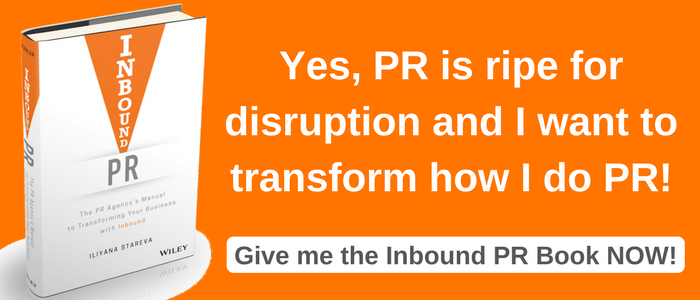
Did you know that 71% of consumers who have had a good social media service experience with a brand are likely to recommend it to others?
Social media allows you to build brand awareness without needing to invest a ton in media, print or display advertising. It allows you to bring leads to your business by complementing or augmenting your other marketing efforts such as email or events.
Social media has replaced the need for an intermediary by enabling you to have a direct one-on-one contact with your prospects and customers in a genuine, human way.
Through social conversations, you can build an authentic brand that attracts people to your business and builds loyalty with customers.
This all sounds great, right? The big question, though, is how do you truly make this happen and leverage the benefits of social media to help you grow your business.
At HubSpot, we are lucky to have an amazing Academy team who creates a ton of valuable content that teaches people how to do inbound, email marketing, content marketing and more.
We've always believed that sharing is about helping and we've never shied away from creating educational content that's free. One such resource is the new social media certification.
Having just completed it is what prompted this post in which I want to share with you some key learnings around developing a social media strategy. I do, however, recommend doing the certification and watching the videos as well - there's so much in there!
Below I've listed the key steps you need to follow to develop a social media strategy. I'll go through each and one of them in more detail.
The 6 Key Steps to Developing a Social Media Strategy
- Align your social strategy with your business goals
- Define your buyer persona
- Choose the right social channels for your business
- Define your social media KPIs
- Build or assign a social media team
- Evaluate the best social media tools
#1 Align your social strategy with your business goals
Your overall business goals and objectives should inform your social media goals. As with your business goals, you want your social media goals to use the S-M-A-R-T method: specific, measurable, achievable, relevant and timely.
Being able to articulate your social media goals and plan the impact your goals will have on the company is especially key to securing executive buy-in and budget for your campaigns.
The social media certification gives this as an example:
If your company has a goal of building brand awareness among college students, one of your social media goals might be to develop videos with content that’s helpful or funny for college students, and set an advertising goal of reaching 250,000 college students by the end of the year. Even better, you can set a secondary goal of having the students interact with the content in some way — commenting on it or sharing it with their friends — thus increasing brand reach and giving you a direct way to measure if and how you’re meeting your goal.
#2 Define your buyer persona
At the heart of any inbound strategy is the buyer persona.
A buyer persona helps you determine who your ideal customer is. Understanding who you want to reach will guide you in a variety of ways, from choosing the right social media platforms to use, creating the best mix of content to share and putting it in front of the right people, to being able to target advertising to the right audience.
Some of the key things you need to define are:
- basic demographics about your buyer persona like age, gender, income, occupation, interests, motivations, and objections.
- psychographics such as which websites they visit, which online shops they frequent, and which social sites they like best.
#3 Choose the right social channels for your business
Having defined your social media goals and researched your buyer persona, you will now have a better idea of where your potential and existing customers are active and how you should reach them through social to achieve the impact you are aiming for.
Facebook, Instagram, YouTube, Twitter, LinkedIn are all great options for different use cases but you don't have to be on all of them at the beginning; over time maybe, if it makes sense for your business. You are better off starting with just one or two (because that depends on your time and resources) and doing that really well, then jumping on more.
I suggest you review each channel and the possibilities on it before making a decision. Here's a good article for that.
#4 Define your social media KPIs
With alignment to overall business goals, a definition of your persona and key social networks picked, you can now define more specific, quantifiable KPIs (key performance indicators) that you need to hit to achieve your bigger goals.
Knowing what your KPIs are from the start will help you make crucial decisions on content, advertising, budget, and other resources you may need.
It's important that you develop actionable goals instead of goals of merely reporting a high result on a vanity metric - a surface-level metric made up of numbers or statistics that look great on paper but don’t correlate to business success such as follower count.
The certification breaks down KPIs into four categories:
- Reach: impressions, mentios, share of voice - useful if one of your key business goals is to drive more awareness for your business.
- Engagement: likes, comments, sharing, ratings, inbound links - useful to measure the success of campaigns as this shows you how people react to your content.
- Return on investment, or ROI: sales revenue, lead conversions, lifetime value - useful because this shows you how social media affects the bottom line.
- Retention and loyalty: reviews, customer satisfaction, SLAs, customer care, sentiment - useful because this relates to customer service.
Once you have those KPIs, you can now start planning campaigns in order to execute against these.
It's also important to track how you are performing against those KPIs at least on a monthly basis and review them in more detail every 6 months to see if you need to adjust something.
#5 Build or assign a social media team
Without people to execute and actually do social media for you, you won't be able to achieve your goals. You need to spend time thinking about the resources you need to make social media happen for you.
The certification gives these five pieces of advice on how to build a social media team:
- First, plan your business and social goals. Plan these goals 1-3 years out, and make sure to consider your stakeholders’ needs.
- Second, identify your possible social media roles based on those goals, then
- Third, develop a timeline for reaching those goals and building the team.
- With that complete, you need to allocate or advocate for resources,
- And finally, evangelise your plan throughout the organization. When others can see and believe your vision they will be more inclined to lend their support.
#6 Evaluate the best social media tools
When it comes to managing your social media strategy, it's often helpful to go beyond the native social media sites and turn to various tools to make your job easier. This is true if you are a small team needing to streamline the amount of time and energy you are spending, or a big team trying to wrangle a massive amount of content and data.
There are a ton of different tools out there (paid and free) and the ones you choose will depend on your budget and goals.
Overall, you should evaluate tools for:
- social media monitoring and listening
- influencer management and engagement
- publishing and community management
- content creation
The right social media tools will enable you to do the work much more efficiently and so achieve the impact you desire.
And there you have it - the six key steps to developing a social media strategy!
Once you have these steps defined and planned for as part of your larger marketing and communications initiatives, you can jump into implementing the work, creating the content, sharing it, measuring it and adjusting as you go.
How do you develop your social media strategy?







